Whether you are a proud RV owner looking for protection from the elements, repair, or storage solutions, choosing the right RV Shelter Ideas can be a big undertaking. Finding the perfect shelter to fit your RV takes more than just finding a metal frame and cover; there is an art to creating a space that both serves its protective purpose and looks good while doing so. To guide you through this process, this article has compiled all the information you need to know about making an informed decision when selecting the best RV Shelter Ideas for your precious recreational vehicle.
Table of Contents
Main functions and benefits of RV Shelters
RV Shelters provide all-weather protection for your recreational vehicle. Featuring durable construction, they are designed to withstand harsh climates and protect your investment.
Some of the main functions and benefits associated with RV shelters include:
Protection from extreme weather conditions: RV shelters have sturdy roofs and walls which provide extra protection from strong winds, rain, snow, hail storms, and other elements. They also keep out animals and pests while keeping debris from entering your RV.
Enhanced security: RVs can be an attractive target for thieves due to their expensive contents. An RV shelter provides added layers of physical security against possible intrusions by providing a secure enclosure which makes it harder to access the interior of the vehicle without permission or detection.
Increased privacy: RV shelters provide a more private area for your recreational vehicle, blocking it from view and reducing the possibility of nosy onlookers peeking in.
Durability and low maintenance: RV shelters are designed to withstand the harshest weather conditions and constructed with durable materials that require minimal maintenance. This means you can simply enjoy your time outdoors without having to worry about cleaning or repairing any damage due to exposure to the elements.
Convenience: RV shelters offer added convenience when you’re traveling, providing a place to park your recreational vehicle quickly and safely while still enjoying all the comforts of home. They also provide extra room for storage, eliminating the need for bulky items such as bikes or outdoor furniture to be transported separately.
Overall, RV shelters are a great investment for any recreational vehicle owner who wants to protect their vehicle from the elements while enjoying all the benefits that come with it. With its durable construction and easy maintenance, an RV shelter can help you enjoy your time outdoors safely and securely [1].

How To Build An RV Shelter?
Picking A Style And Design
The first step in building an RV shelter is deciding what style and design you would like to use. Consider the size of your space, as well as the type of materials that will be used for construction. There are a variety of styles available with different features, such as gable roofs, combination roofs (gable and hip roof), flat roofs, garages, carports, and more. Depending on the style you choose, there may also be additional extras such as windows or skylights that can be added to enhance your shelter’s functionality.
Sourcing Materials
Once you have chosen your desired style and design of RV shelter, it’s time to source materials for its construction. Be sure to choose materials that are appropriate for the design you’re working with. For example, an RV shelter made out of metal will require galvanized steel or aluminum. Wood is another popular material choice as it can be customized to fit your desired design and style. Additionally, some shelters may also need additional items such as roofing shingles, flashing, sealants, and more.
Creating A Foundation
The foundation of an RV shelter is just as important as its construction materials. Generally speaking, a concrete slab should be used to create the foundation of your RV shelter. This ensures that the structure is built on solid ground that won’t shift over time due to various environmental factors. Additionally, make sure your foundation has proper drainage so that any excess water or snow can safely flow away from the shelter.
Assembling And Installing The Shelter
Once all of your materials and foundation are ready, it’s time to assemble and install the RV shelter. Depending on your design choice, you may need assistance in assembling the frame for your structure. Additionally, you may also require a professional contractor to help ensure that everything is installed correctly. Be sure to follow all manufacturer instructions when installing the shelter parts as this will help reduce any potential issues in the future.
Finishing Touches
The final step in building an RV shelter is adding any finishing touches such as paint, sealants, doors, windows, etc. Make sure to use high-quality materials that are designed to handle any potential weather conditions. Additionally, if you plan on using a light source within the shelter, make sure it’s properly installed and connected to a power source. Finally, don’t forget to add your own personal touches such as outdoor decorations or furniture so that your RV shelter is truly one of a kind [2].
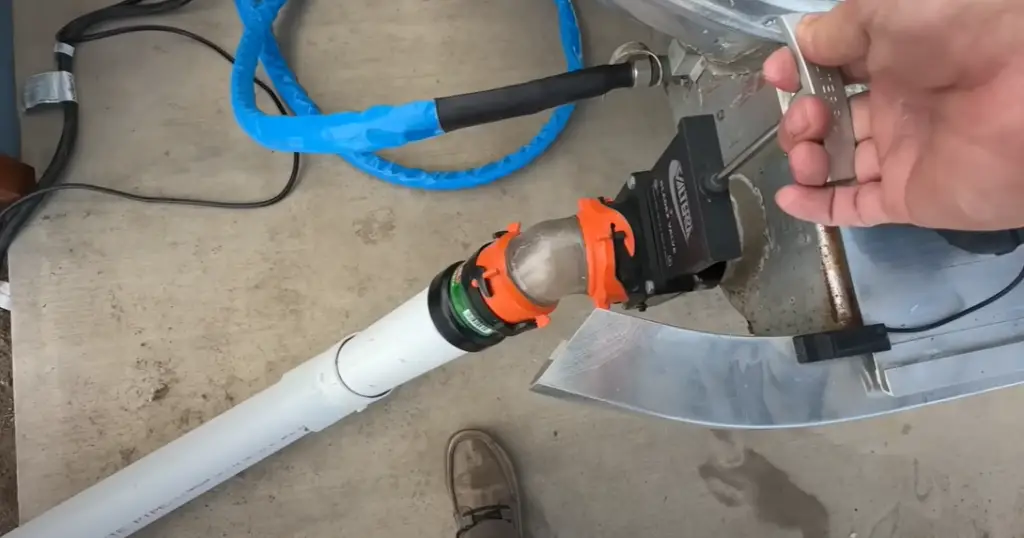
Top 5 RV Shelter Types
- Canopy: A canopy is a great way to provide shelter from the sun and other elements while camping in an RV. It can be set up quickly and easily, and it’s lightweight enough to be transported with ease. The canopy will also help keep the rain off your recreational vehicle, so you can enjoy the outdoors without getting wet.
- Carports: Carports are another option for providing shelter when camping in an RV. They offer protection from both sun and rain, as well as some privacy from passersby. Most carports come with poles that can be installed into the ground for stability during windy conditions.
- Portable Garages: Portable garages are ideal if you need added protection for your RV. They come in various sizes to accommodate any size motorhome or trailer, and they’re quick and easy to set up. Portable garages can also be used as storage units when you’re not on the road.
- Tarpaulins: If you need a low-cost option for providing shelter for your RV, then tarpaulins are a great choice. You can purchase them in various sizes and colors, depending on your needs. Plus, they’re lightweight and can be packed away into compact spaces when not in use.
- Awnings: Awnings offer an extra layer of protection from the sun while camping in an RV. They typically hook onto the side of the RV and can be quickly set up or taken down. Many awnings come with built-in LED lights, so you can enjoy your outdoor adventures even after dark.
No matter which type of shelter you choose for your RV, it’s important to make sure that it’s properly installed and set up to provide maximum protection from the elements. With the right type of shelter, you can feel confident that your recreational vehicle will remain safe and secure while you explore the great outdoors.
Top 5 RV Shelter Ideas
Wooden Shelter
Wooden shelters are the perfect choice for RVers who want a weather-resistant, low-maintenance shelter. They provide plenty of protection from wind and rain while looking great too! Wooden shelters can be customized to fit any size or shape of RV and are relatively easy to install. Many models come with pre-cut panels that can be quickly assembled with minimal tools. The main downside is that wooden shelters are more expensive than other types of RV covers, but they offer the best combination of style and durability.
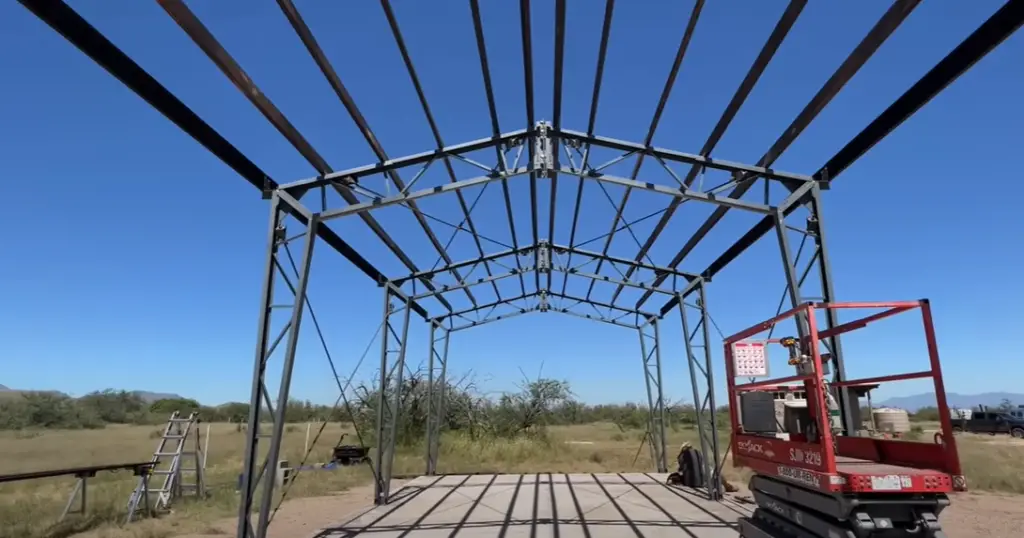
Metal Shelter
Metal shelters offer superior durability compared to wooden shelters and can withstand extreme weather conditions such as heavy snowfall or high winds. Metal shelters usually come in two forms: aluminum or steel. Aluminum is lightweight and corrosion-resistant, making it an ideal material for RV covers. Steel shelters are extremely strong and can last a lifetime, but they require more maintenance than aluminum structures. The main downside is that metal shelters can be noisy in windy conditions and may not provide as much insulation as wooden models.
Fabric Shelter
Fabric shelters are the most affordable option when it comes to RV covers. They come in a variety of colors and sizes to fit any size or shape of RV. Fabric shelters are lightweight, easy to install, and offer great protection from the elements. However, fabric shelters don’t offer the same level of durability as wooden or metal models so they may need to be replaced sooner than other types of covers.
Vertical Roof Design
The vertical roof design is a great choice for RVers who want an aesthetically pleasing shelter with superior protection from the elements. This type of shelter has one solid piece of corrugated metal that runs from the top to the bottom of the cover, providing superior strength and stability. The downside is that this style can be more expensive than other types of covers.
Tarp Shelter
Tarp shelters are lightweight and inexpensive, making them perfect for casual campers or those on a budget. They provide basic protection from wind and rain but aren’t as strong as other types of RV covers. Tarps also tend to fade over time and need to be replaced after a few years of use. On the plus side, they are extremely easy to install and can be taken down quickly when you’re ready to move on.
A-Frame Shelter
A-frame shelters are a great option for RVers who don’t want to invest in an expensive shelter. They provide good protection from rain and sun but may not be as strong as other types of covers. A-frames are easy to set up and take down, making them ideal for short trips or seasonal campers. The main downside is that they can be noisy in windy conditions due to their lightweight construction.
Half-Deck-Half-Shelter Style
The half-deck-half-shelter style is a great choice for RVers who want an attractive and functional shelter. This type of cover has a deck on one side and a shelter on the other, providing excellent protection from rain and sun while looking great too! The downside is that this type of cover can be expensive, but it will provide the best combination of style and durability for your RV.
RV Shelter Canopy
RV canopy shelters are a great option for RVers who want an affordable and easy-to-install shelter. Canopies offer plenty of protection from the elements while still being lightweight and portable. They can be installed in minutes and taken down just as quickly when it’s time to move on. The downside is that canopies don’t provide the same level of durability as other types of covers, so they may need to be replaced sooner than other models [3].

What to consider when choosing the right RV shelter?
When selecting your RV shelter, there are a few key factors to consider. These include durability, style and size, cost, and ease of setup.
Durability: You should look for an RV shelter that is constructed from sturdy materials such as heavy-duty steel frames and weatherproof fabrics. Make sure the frame is tested for wind resistance.
Style and Size: Your RV shelter should be large enough to comfortably fit your vehicle without crowding it in. You should also make sure it has plenty of room for storage or other uses. Additionally, consider the style that best fits your needs — a more classic design or one with modern features.
Cost: The price of an RV shelter can vary greatly depending on its quality and features. Do some research to determine what your budget can accommodate.
Ease of Setup: Depending on the model you select, RV shelters may require a minimum level of assembly and setup. Make sure you know how much time it will take to construct the shelter before purchasing it. Additionally, look for shelters that are easy to take down if necessary.
These are some important factors to consider when selecting an RV shelter. With careful research and consideration, you can find one that meets all of your needs and fits within your budget!
FAQ
How can I save space in my RV?
One of the best ways to save space in your RV is to make sure you pack only the essentials that you need. Try minimizing bulky items and only taking things that serve multiple purposes. You should also try to utilize storage spaces like shelves, bins, and cupboards for smaller items. Decluttering can also help create more space in your RV by getting rid of unnecessary items or furniture. Additionally, you could consider investing in multipurpose furniture such as a fold-out bed or couch that can double as a seating area during the day. Last, but not least, make sure to keep the interior of your RV clean and organized at all times so you won’t be wasting any valuable space!
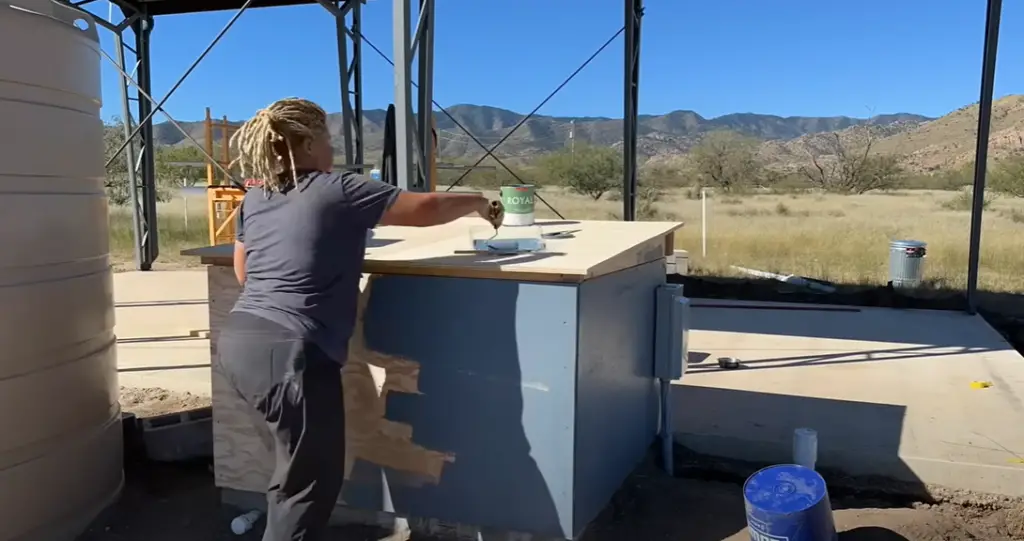
What are some good ways to save money while traveling in an RV?
One of the best ways to save money while traveling in an RV is by taking advantage of free or discounted camping opportunities. This could be done by staying at campgrounds that offer discounts for senior citizens, military personnel, or those who are members of specific clubs. Additionally, you can use a variety of websites and apps to find deals on campsites and attractions. Another great way to save money is by preparing your own meals instead of eating out all the time. You can also look into free activities like hiking trails and local parks as well as taking advantage of free Wi-Fi when it’s available. Finally, make sure to plan and research any potential expenses so that you don’t end up overspending.
What should I consider when choosing an RV for my next camping trip?
When it comes to choosing the right RV for your next trip, there are a few things to consider. First, think about the size of the vehicle and how much space you need. You’ll also want to check out interior features such as sleeping quarters, storage solutions, and kitchen appliances. Additionally, you’ll want to make sure the RV is equipped with the necessary safety features like airbags and antilock brakes. Finally, look into extras like entertainment systems and satellite TV hookups so that you can stay connected while on the road!
How do I build a room in my RV?
Building a room in your RV is quite simple! First, you’ll need to measure the space available and determine how much room you have to work with. Next, decide what type of walls you would like to use — there are several options such as fabric panels, foam insulation board, or wood paneling. Once you have all the necessary materials, it’s time to start building! Measure and mark where the walls will go then attach them securely. Finally, add any furniture or other decorations that you would like for the finished look. With some patience and creativity, you can create a cozy little room in no time!
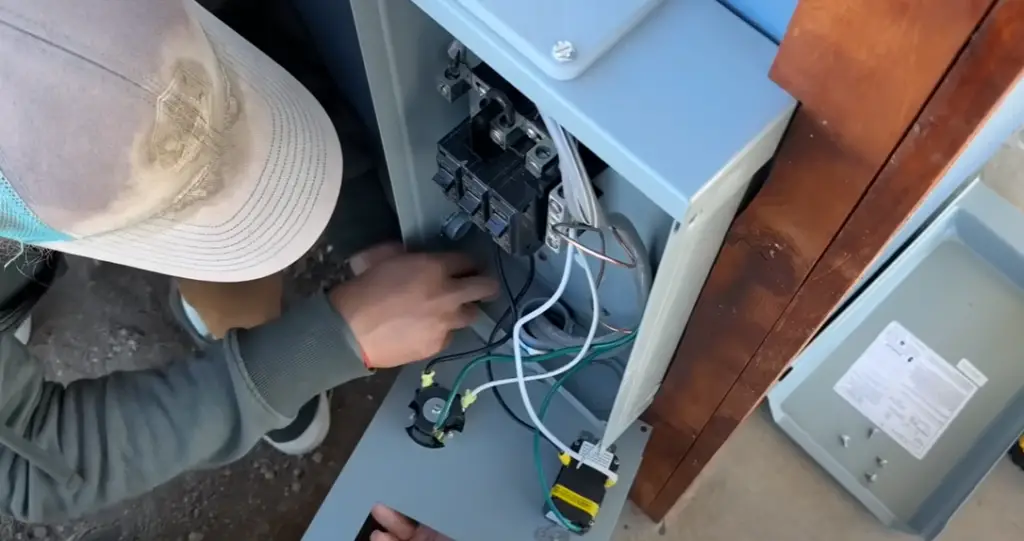
How much does it cost to make an RV shelter?
The cost of building an RV shelter can vary greatly depending on factors such as size, materials used, and the complexity of the structure. Generally speaking, it’s safe to say that you should expect to spend anywhere from $1,000-$10,000 for a basic shelter. If you plan to build a more elaborate shelter with additional features like insulation or drainage systems, then your costs could increase significantly. It’s important to research and compare prices before making any final decisions so that you can find the best deal possible. Additionally, make sure to factor in any permits or zoning laws that may apply in your area! With careful planning and budgeting, creating an RV shelter can be both affordable and practical.
How tall should I build my RV shelter?
The height of your RV shelter will depend on several factors such as the size of your RV, the type of materials you plan to use, and any local zoning requirements. Generally speaking, most RV shelters should be at least 10 feet tall to accommodate a standard-sized recreational vehicle. Additionally, if you’re using metal siding for your walls then it is recommended that they are built 12 feet high or taller. It’s also important to research any local laws regarding the height of structures so that you can ensure your shelter meets all legal requirements! With careful measurement and planning, you can build an RV shelter that is both functional and aesthetically pleasing.
Should I build an RV shelter or buy one?
Whether you decide to build or buy an RV shelter will depend on your individual needs and preferences. Building a shelter from scratch can be more cost-effective than buying one, but it may require additional time and effort. On the other hand, purchasing a pre-made shelter could save both money and time in the long run if you can find one that meets all of your needs. Ultimately, there is no right or wrong answer when it comes to this decision — it’s up to you to weigh the pros and cons before making a final choice! Whichever route you choose, make sure that your RV shelter is properly constructed for maximum safety and longevity.
Why choose RV Shelters?
RV shelters are the perfect solution for those who need a secure, long-term storage area for their recreational vehicle. Not only do RV shelters protect from the elements, but they also offer extra security and peace of mind knowing that your investment is safe and sound. Additionally, RV shelters can be custom-built to accommodate any type or size of recreational vehicle so you’ll never have to worry about finding a suitable spot to store it. Finally, many RV shelters come with additional features such as lighting and ventilation systems which can make them even more comfortable during extended stays. With all these great benefits, there’s no wonder why so many people choose RV shelters!
What are the best materials for building an RV Shelter?
The best materials to use when constructing an RV shelter are those that are both durable and cost-effective. Metal siding is often a popular choice due to its strength and weather-resistance capabilities. However, wood paneling or foam insulation board can also be used depending on the specific needs of your project. Additionally, make sure that whatever material you choose is properly treated to protect against water damage, rot, and other potential issues. With the proper research and quality materials, you can build an RV shelter that will last for years to come!
How much maintenance do I need to do on my RV shelter?
The amount of maintenance that is necessary for an RV shelter will depend largely on the type and quality of materials used in its construction. Generally speaking, metal siding requires very little upkeep whereas wood paneling or foam insulation board may need to be treated more frequently. Additionally, it’s important to regularly check for any signs of damage such as leaks, cracks, or missing pieces. Taking a few simple steps like this can help ensure your shelter remains in optimal condition so that you can enjoy many years of use! With regular maintenance and care, your RV shelter should provide you with years of hassle-free protection.
Why shouldn’t you build an RV shelter on top of your driveway?
Building an RV shelter on top of your driveway is generally not recommended due to a few potential issues. First and foremost, the added weight could cause damage to the underlying concrete or asphalt surface. Additionally, it may be difficult to properly secure the shelter if you are unable to drive in stakes or secure anchors into the ground.
Finally, excessive runoff from the roof of your shelter could cause pooling near your home which can lead to flooding and other damages. All in all, it’s best to avoid building an RV shelter directly on top of your driveway whenever possible! With careful planning and consideration, you can find a better spot for your RV Shelter that won’t create any unwanted headaches.
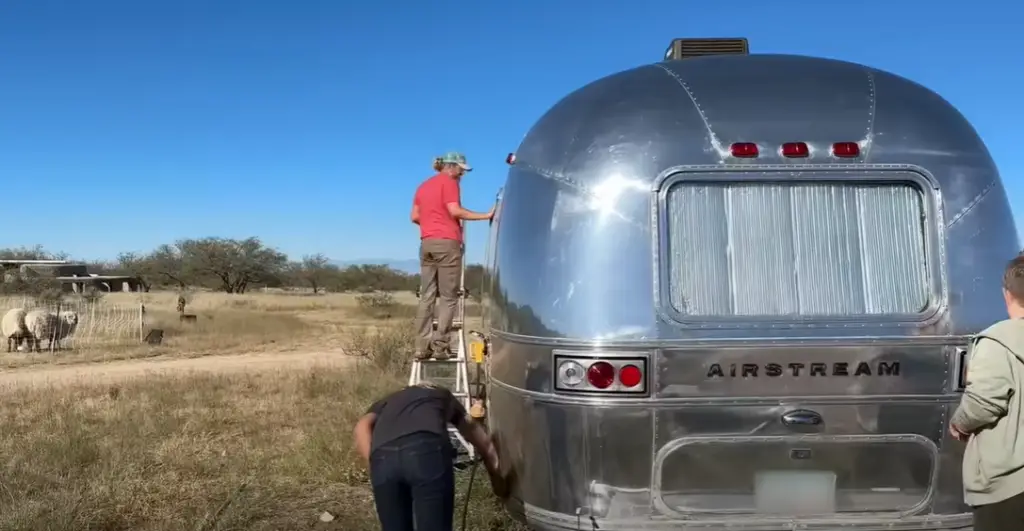
Why to choose an Aluminum RV Shelter?
Aluminum RV shelters are an excellent choice for those who need a strong and durable structure to protect their recreational vehicle. Not only is aluminum lightweight and easy to install, but it is also highly resistant to corrosion and other environmental factors. Additionally, aluminum roofs can often be walked on without fear of damage or collapse. Finally, aluminum shelters require very little maintenance which makes them ideal for long-term use in both residential and commercial settings. With so many great benefits, it’s no wonder why an aluminum RV shelter is such a popular choice!
Useful Video: Family Builds an RV Carport in 1 WEEK!
Conclusion Paragraph
RV Shelters are a great way to keep an RV in safe and secure storage. It provides a place to store your RV that is more convenient, safe, and cost-efficient than traditional methods of RV storage. You can also enjoy the extra amenities such as hookups for power and water, or even outdoor activities such as hiking or biking in some locations. The flexibility of RV Shelters makes it an ideal choice for many travelers who need a secure, affordable place to keep their rig while they are away from home. Whether you’re traveling short-term or long-term, RV Shelters are a great way to make sure your vehicle stays covered and protected without breaking the bank. With so many different options available, you can easily find the right solution for your specific needs.
References:
- https://sugermint.com/8-reasons-why-you-need-rv-carports-at-home/
- https://www.doityourselfrv.com/diy-rv-carport/
- https://www.metalcarports.com/best-rv-shelter-ideas/

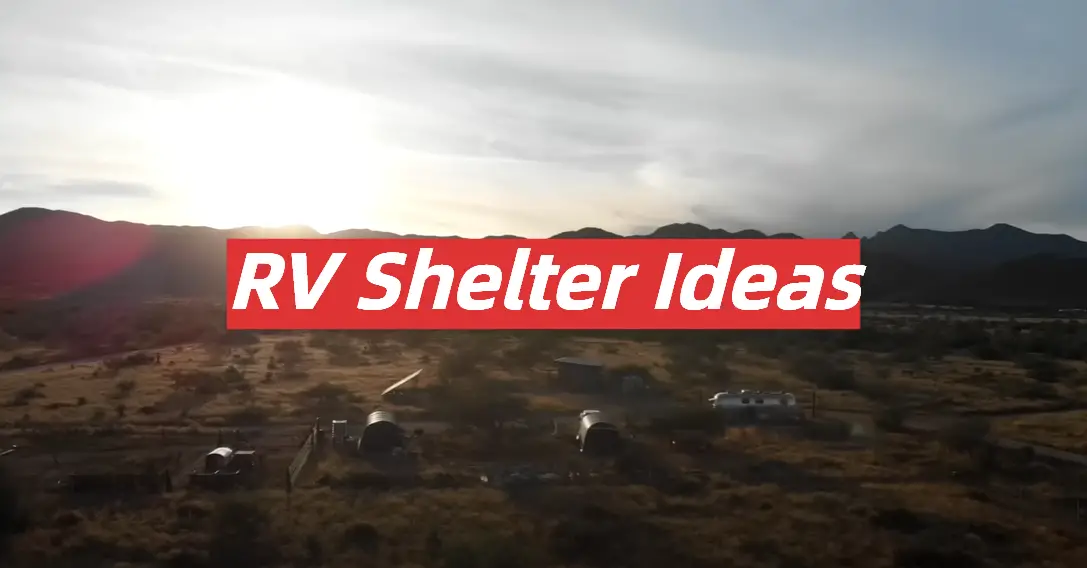

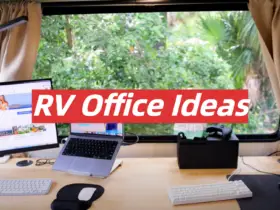
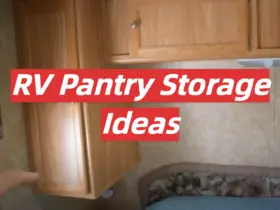
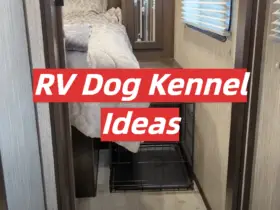
Leave a Reply